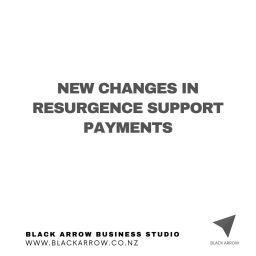
When you’re self-employed, running a small business or working as a contractor, cash flow is of utmost importance. This is where you can discover helpful tips to ensure that you manage your finances effectively.
Forecasting when cash will come in and go out is crucial in preparing for the future. By predicting high and low points, you can prevent financial troubles.
Moreover, cash flow forecasts serve as a crucial business planning tool. Use them to plan your business’ expansion and growth without overburdening your resources.
A cash flow forecast acts as a cashbook that estimates the income and expenses of you or your business for a particular period in the future, whether it’s a week, month, quarter, or even the entire financial year.
The cash flow forecast details the following for each period:
- Anticipated initial account balance
- Estimated income
- Projected outgoings including bills, salaries, and raw material costs
- Expected closing account balance
- Any remaining funds.
While it is commonly presented in spreadsheet format, numerous contractors, sole traders, and small businesses rely on accounting software and collaborate with their accountants or bookkeepers to ensure higher precision.
The worth of a cash flow forecast is directly proportional to the level of information and specificity included within it.
This task requires thoughtful consideration as you need to make a well-informed judgement on the amount of income you anticipate generating.
It’s essential to provide three variations of your estimated income, which are:
- A pessimistic estimate.
- A realistic, or most likely, estimate.
- An optimistic estimate.
Multiple projections prepare you for various scenarios and demonstrate to potential investors and bank managers that you consider multiple possibilities.
Income encompasses more than just the revenue from sales; it comprises other monetary sources, such as cash injections from bank loans, interest earned on savings, and returns from investments.
To estimate your future income, utilise your past financial data. Consider any expected changes or challenges that may affect your income, such as periods of growth and investment, marketing campaigns, or seasonal fluctuations during holiday periods.
For those new to business without long-term sales data, making informed predictions is still possible using benchmarking data and expert advice. Consider the following options:
- Consult with an experienced accountant in your industry.
- Utilise Stats New Zealand’s Annual Enterprise Survey to estimate potential sales.
- Refer to Inland Revenue’s industry benchmark figures.
- Use the Employee Cost Calculator.
- Consider investing in expert assessments of your industry’s economic performance.
- Seek guidance from a mentor or a director with start-up experience to assist with your predictions.
Annual enterprise survey — Stats NZ
Industry benchmark figures — Inland Revenue
New contractors may struggle to determine appropriate rates to charge. This website provides tips on how to overcome this challenge.
Daily or weekly forecasts are crucial to staying updated on day-to-day business operations. On the other hand, longer-term forecasts are essential for strategic planning, revealing the need to boost sales or secure additional funding.
When creating your list of expenses, strive for a comprehensive level of detail. Include all expenses, from petty cash to winter heating bills.
For established businesses, review previous outgoings to identify any overlooked expenses.
For new businesses, contractors, or sole traders, consider all potential start-up and ongoing costs.
Consult with your accountant to ensure the list of expenses is as comprehensive as possible.
Cash flow forecasts are a critical tool for all stages of business, whether you are a contractor, a sole trader, or an established company. Utilise forecasts to:
- Avoid financial difficulties
- Plan for future cash shortages
- Meet tax obligations
- Plan for asset purchases
- Plan for growth or expansion
- Make informed decisions regarding borrowing
- Benchmark performance
- Test different strategic scenarios
- Determine the optimal time to invoice
- Build your case for investment
- Forecast the cost of hiring additional employees.
- Failing to create cash flow forecasts can lead to financial difficulties.
- Overestimating future income is ineffective; accurate predictions require honesty and data-backed analysis.
- Neglecting to document past financial activities hinders accurate cash flow predictions for the future.
Are you struggling with accounting and business management for your business? We are here to help! Get in touch with us to discuss how our expert services can support your business’s success. Contact us today to schedule a free consultation and see how we can add value to your operations.















